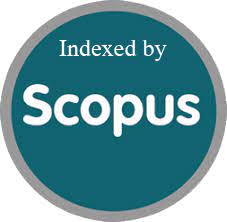A Hybrid Approach for Alzheimer's Disease Diagnosis: Integrating NCA-Based Feature Selection with SVM, KNN, and ESO-Optimized Neural Networks.
DOI:
https://doi.org/10.52783/jns.v14.3511Keywords:
SURF, Support Vector Machine, Neural Network, Local Binary Patterns, K-Nearest Neighbors, Enhanced Snake Optimization, CLAHE, Bag of Words, Alzheimer's DiseaseAbstract
Alzheimer's disease (AD) is a progressive neurodegenerative disorder that poses significant challenges for early detection and accurate classification, crucial for effective intervention and management. In the realm of medical imaging and diagnostic classification, various machine learning techniques have been employed to enhance the precision of AD detection. This paper presents a novel framework for the detection and staging of AD using MRI brain images. The methodology begins with the acquisition of T1-weighted MRI scans from the OASIS database, followed by contrast enhancement through Contrast Limited Adaptive Histogram Equalization (CLAHE). The enhanced images are analyzed using a multi-faceted approach involving several feature extraction techniques. Discrete Wavelet Transform (DWT) combined with Local Binary Patterns (LBP) captures detailed texture features across multiple scales. Additionally, Histogram of Oriented Gradients (HOG) is utilized for structural feature extraction, and Speeded Up Robust Features (SURF) combined with Bag of Words (BoW) is employed for key point detection and representation. These features are integrated into a combined feature vector, which is then refined using Neighborhood Component Analysis (NCA) for optimal feature selection. Classification is performed using Support Vector Machine (SVM), K-Nearest Neighbors (KNN), and an Enhanced Snake Optimization (ESO)-optimized Neural Network. Performance evaluation metrics including accuracy, sensitivity, and specificity are used to validate the effectiveness of the proposed framework in AD detection and staging. The results indicate that the ESO-NN model, achieves the highest accuracy of 98.07% among the evaluated classifiers. This superior performance underscores the potential of ESO-NN in improving diagnostic accuracy and reliability, marking a significant advancement in the field of AD detection and classification.
Downloads
Metrics
Downloads
Published
How to Cite
Issue
Section
License

This work is licensed under a Creative Commons Attribution 4.0 International License.
You are free to:
- Share — copy and redistribute the material in any medium or format
- Adapt — remix, transform, and build upon the material for any purpose, even commercially.
Terms:
- Attribution — You must give appropriate credit, provide a link to the license, and indicate if changes were made. You may do so in any reasonable manner, but not in any way that suggests the licensor endorses you or your use.
- No additional restrictions — You may not apply legal terms or technological measures that legally restrict others from doing anything the license permits.










